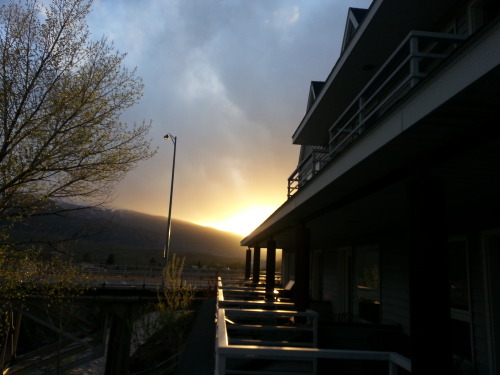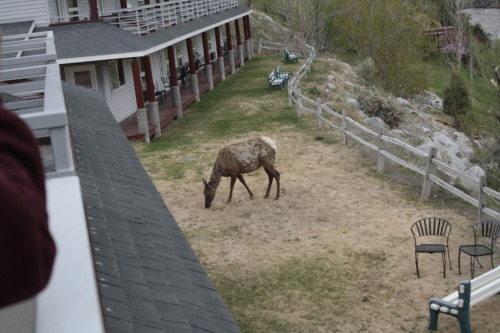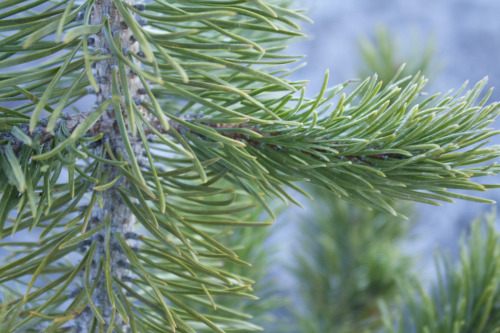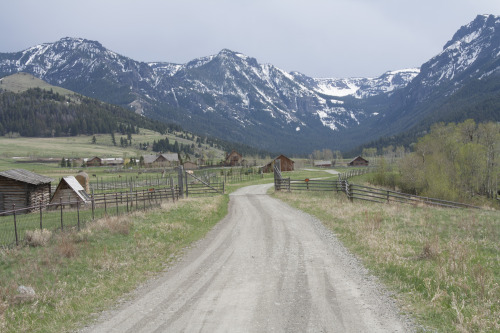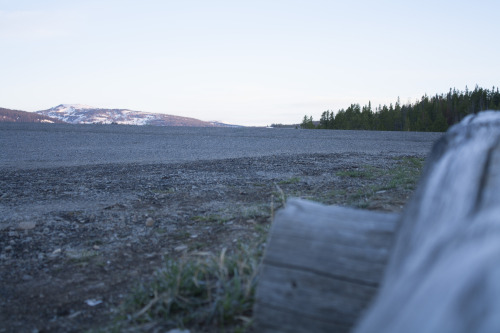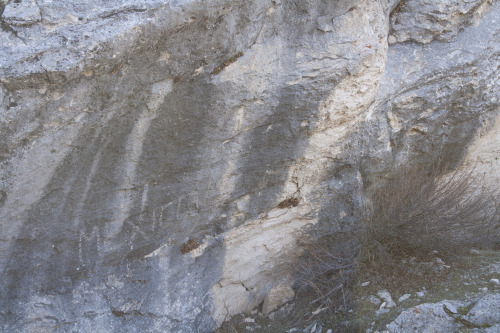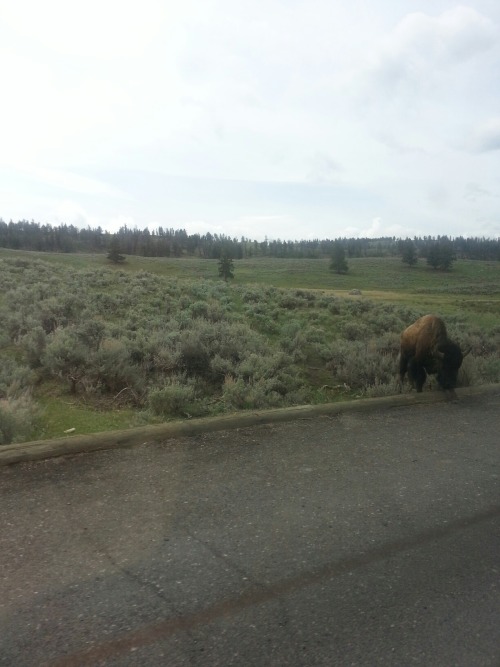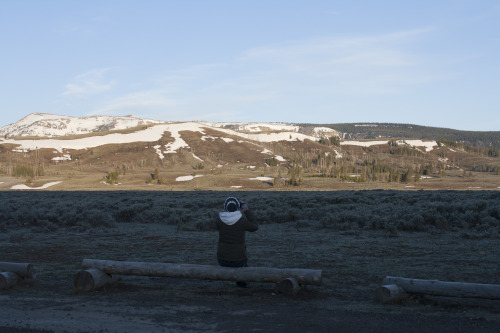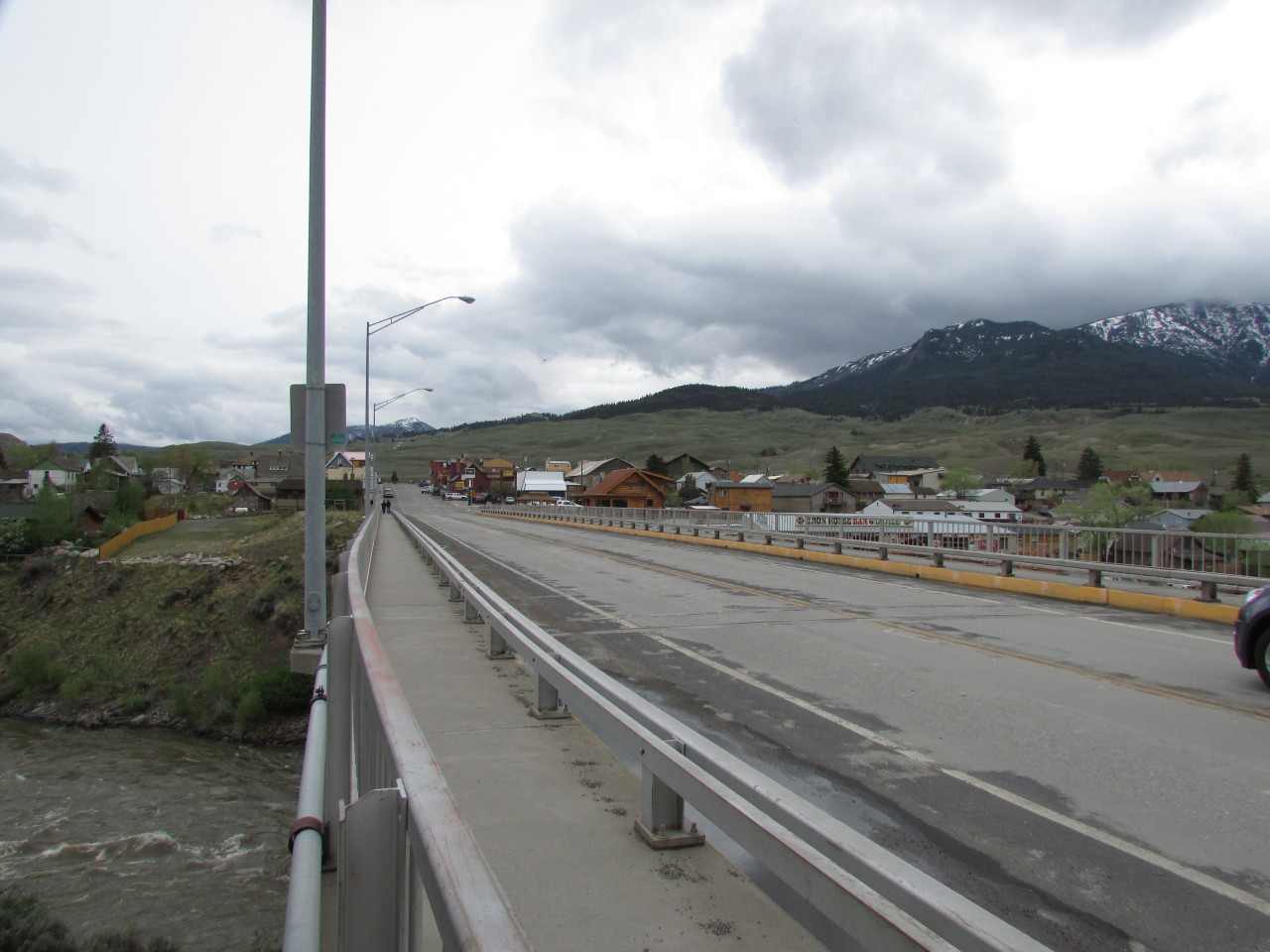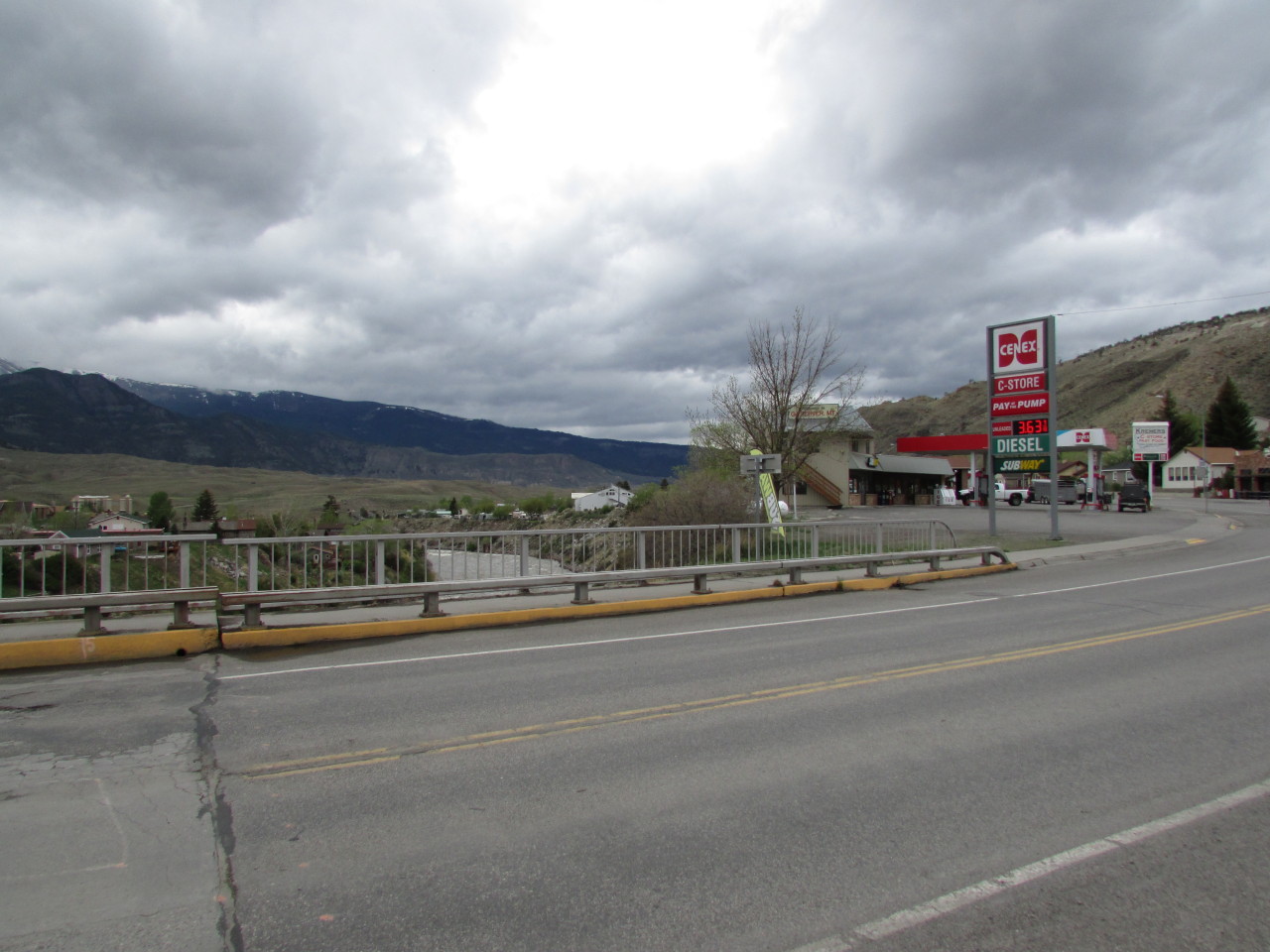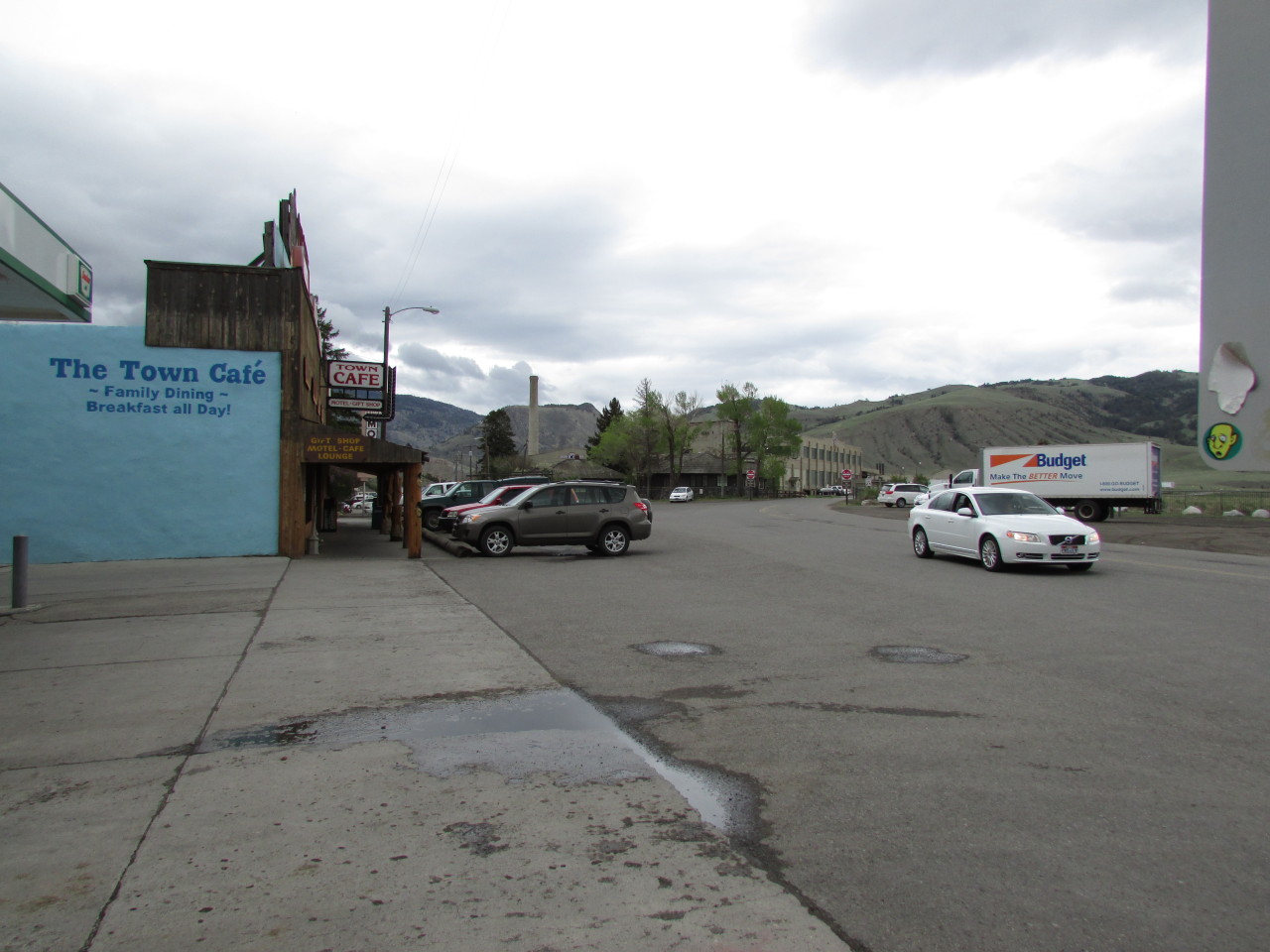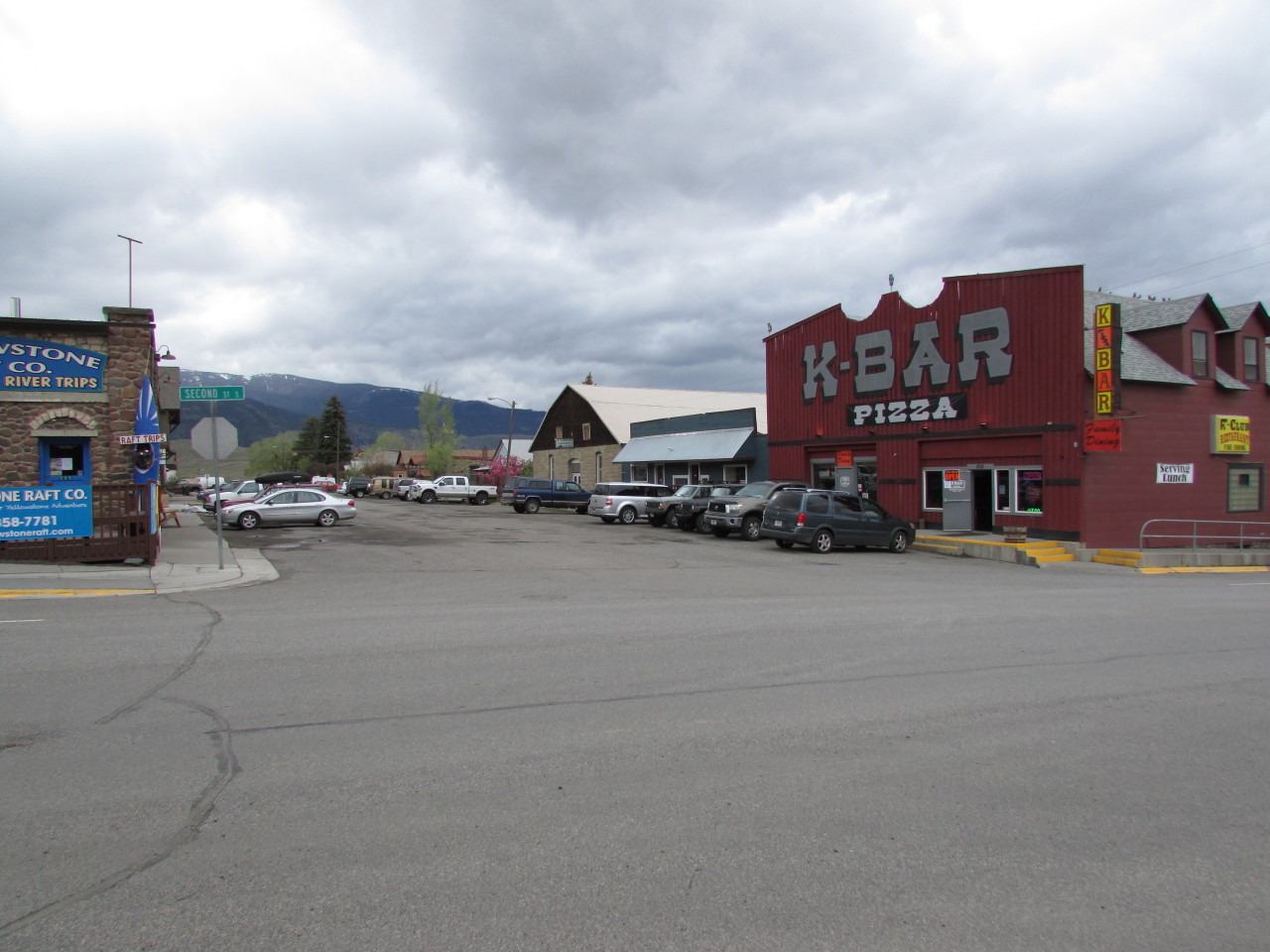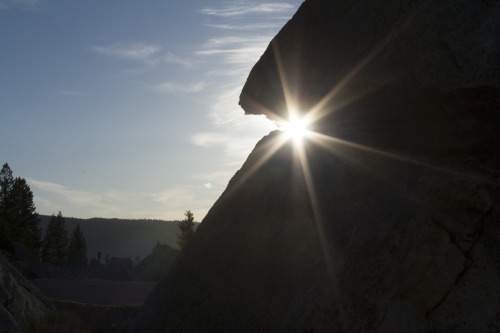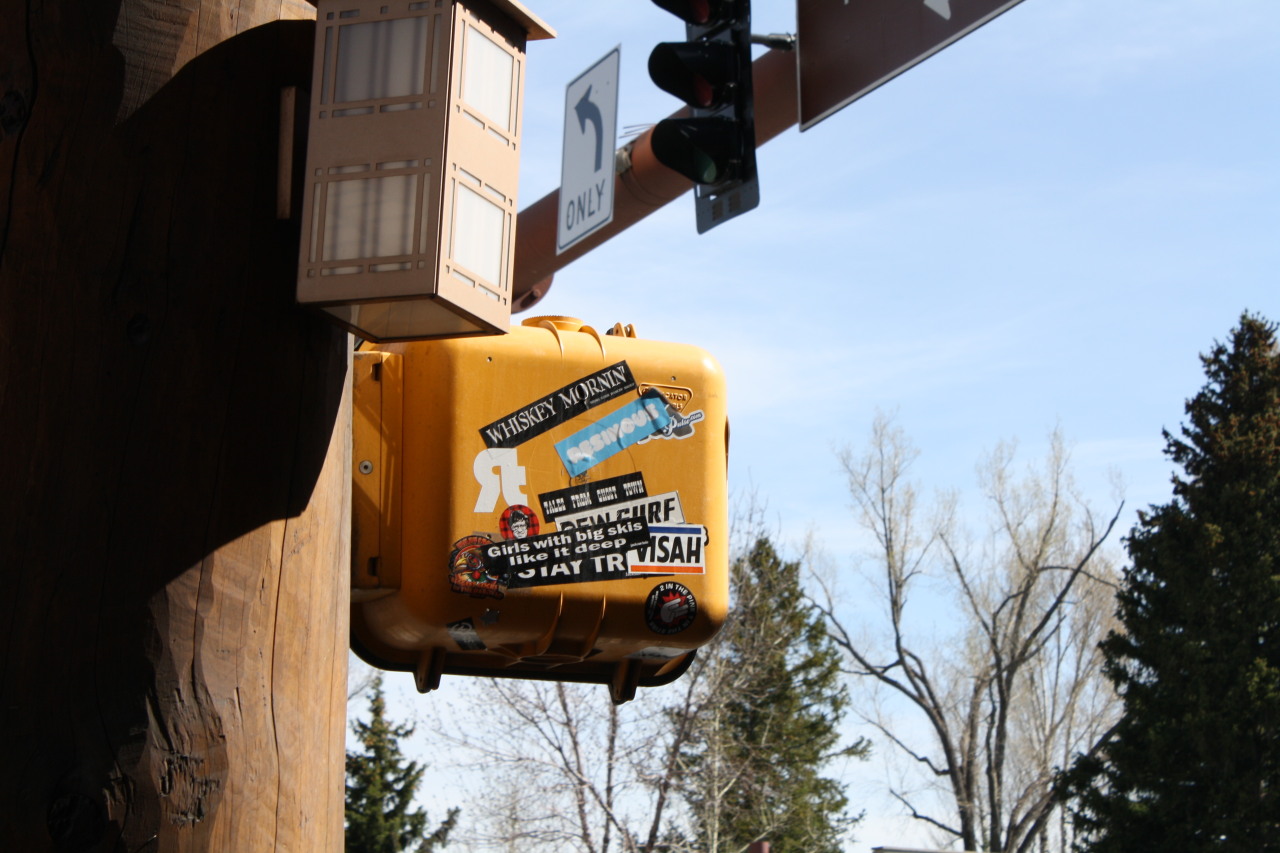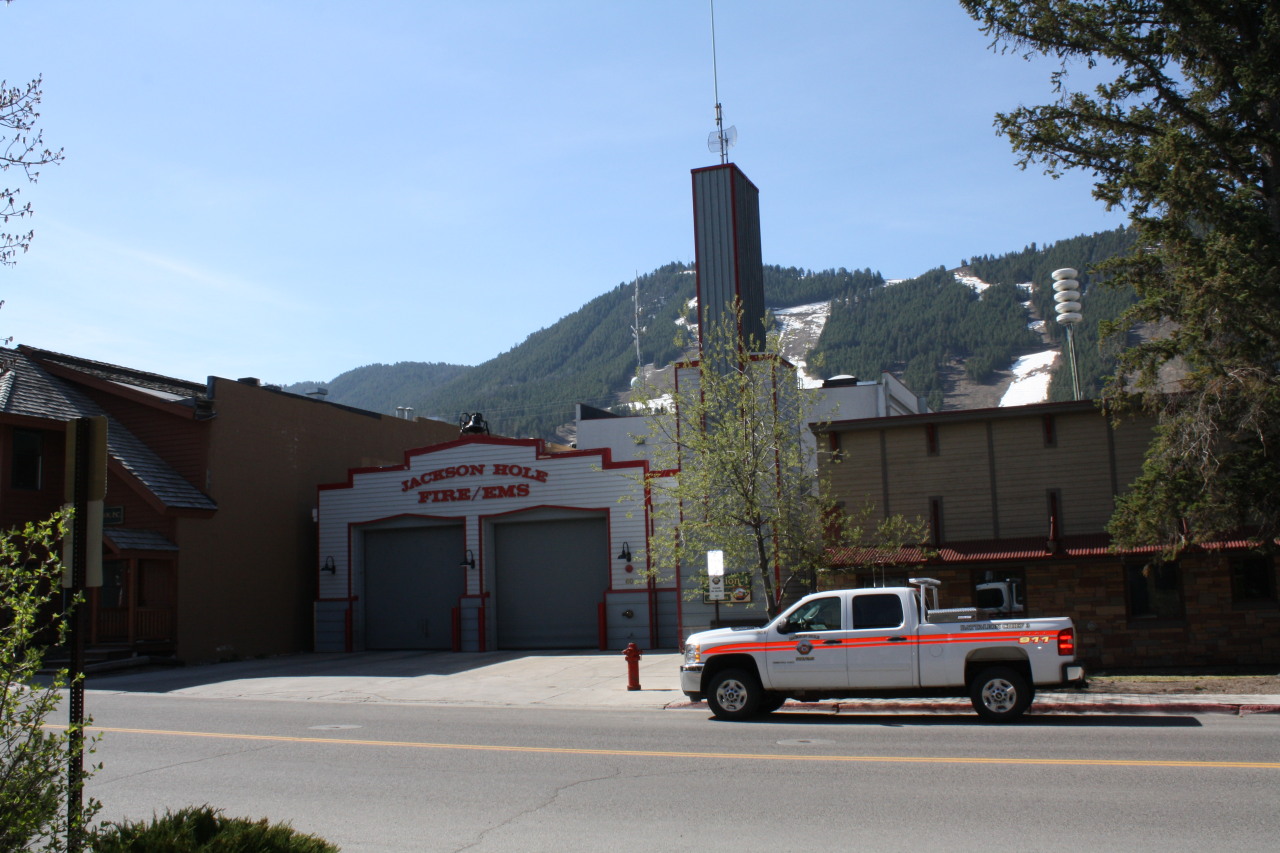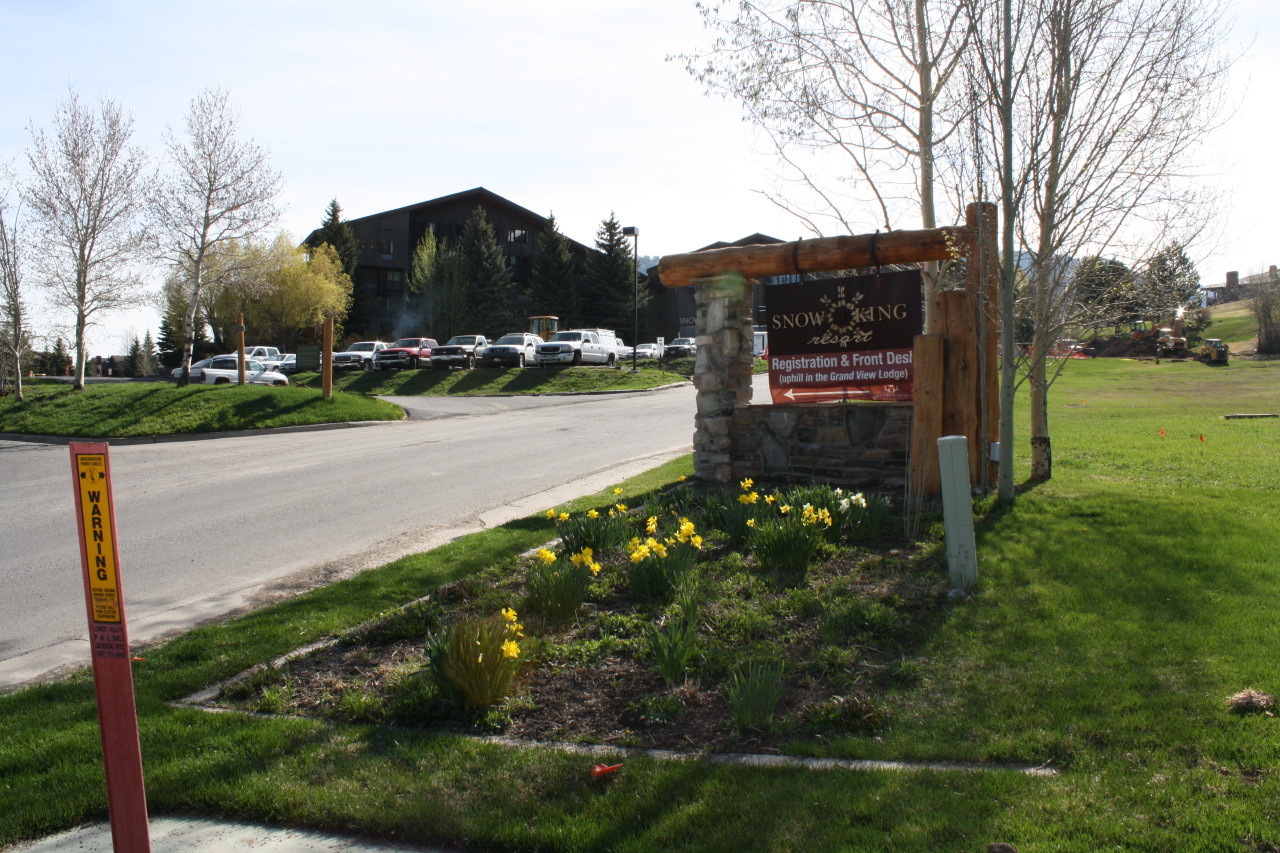Archive for the month "May, 2013"
Emily’s Photography
Gardiner Place-As-Text
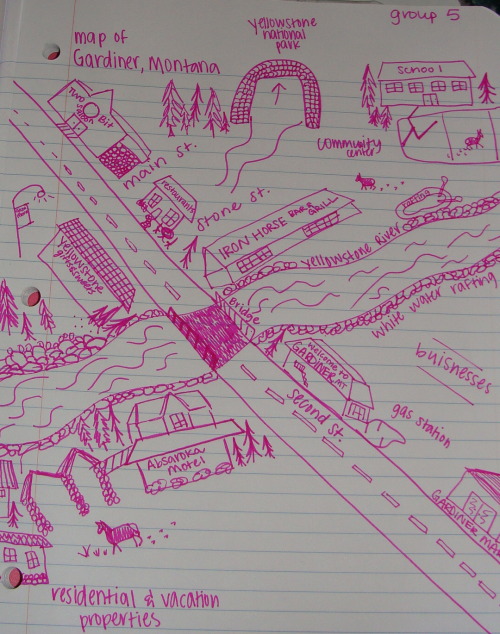 The physical setting of Gardiner, Montana is extremely rural. Its physical location directly puts it outside the park. Although a majority of Montana (and Wyoming) is surrounded by mountains and hills, each landscape is different. In this case, the mountains along the city’s side are covered in a large amount of vegetation and the side opposite of Yellowstone National Park (if you’re facing out from Absaroka Lodge) has large hills with little to no vegetation.
The physical setting of Gardiner, Montana is extremely rural. Its physical location directly puts it outside the park. Although a majority of Montana (and Wyoming) is surrounded by mountains and hills, each landscape is different. In this case, the mountains along the city’s side are covered in a large amount of vegetation and the side opposite of Yellowstone National Park (if you’re facing out from Absaroka Lodge) has large hills with little to no vegetation.
Although the town is surrounded by rolling hills, it’s fairly flat (with a river going doing its center). It is divided by the Yellowstone River, which sits low in a canyon. Consequently, this division created by the river has created a division of the buildings in the town. The built environment is much like Jackson Hole with saloon type and old west type buildings, although, it might have been built this way when the town had was founded and never been replaced (they look dated). There is some new construction, most of which is on the side of the river opposite of the park that seems newer but mimics the old west style to draw in tourists.
The built environment is hard to delineate between residences and businesses. There is a high concentration of bars, restaurants, and gift shops towards the park, while hotels/motels and residential areas are built along the river bank and the opposite side of the river. Tourists make up a majority of the social environment because Gardiner is literally right outside the park. Unlike Jackson, there is a larger presence of the locals because a number of them live in the town itself. There also seems to be a very strong sense of community despite the controversies involving wolf and bison.
Gardiner, like Jackson Hole, resides in a valley which provides a form of natural protection from the elements. Meanwhile, the climate is very different in Gardiner. The precipitation that the mountains provide affects the warm and cold weather. The town is built alongside the river, which was vital at the time in which the town was built (transportation, trade, water, etc). Also, the landforms affect the existence of the town because of Yellowstone National Park (outdoor activities that include white water rafting and zip lines). Most of the people we encountered were employed in industries catering to tourists. Everyone here seems to be happy to answer whatever questions we might have and their kindness seems genuine. They do not seem to strive for large houses and fancy cars. Instead, they want to provide visitors with education to better Yellowstone National Park. We did not encounter as many tourists because it is not peak season (they are just coming out of winter – the off season).
They are packaging themselves as the old west for the benefit of tourism through the authentic old west architecture and construction of the town. At the same time, they are not trying to be something they’re not. Their way of life hasn’t changed (they are still farmers, ranchers, and living off the land). The current businesses cater to the needs of the activities throughout the park and places for them to come home to at the end of the day. The housing is appropriate for living within your means and living a simple life. They try to do things to strengthen the community such as plays and basketball games at the high school.
The wildlife is the heart of Gardiner. Consequently, this has created a division between the town’s people starting controversies such as wolf vs. ranchers and the buffalo. These issues are reoccurring themes in public documents and conversations.
Photography Blog
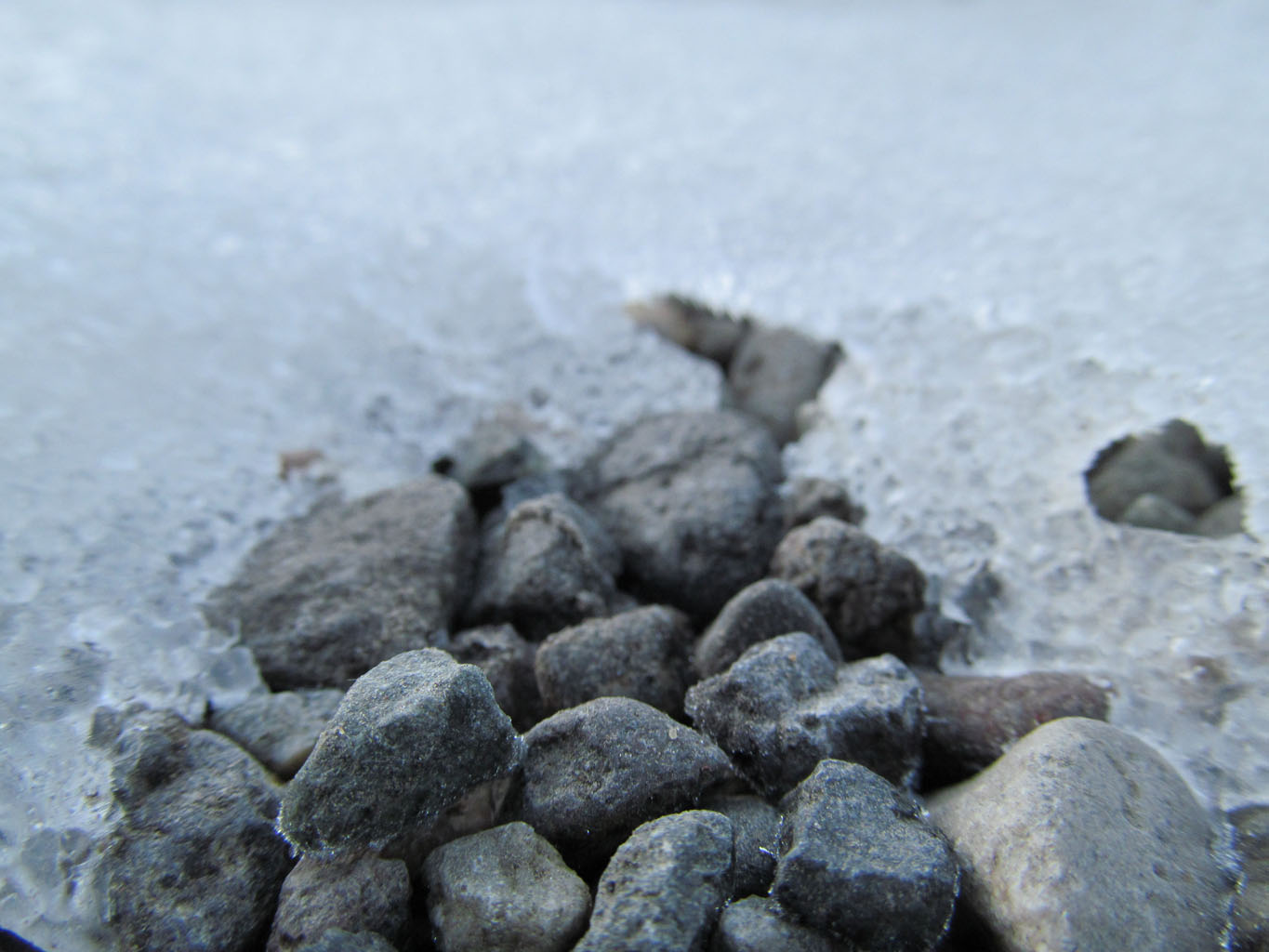
This picture shows the beauty in simplicity. These small rocks appear to be emerging out of the frozen snow.

Taken right after sunrise, this picture shows the tiny droplets of dew on blades of green grass. The dew and the grass are the main focus of this picture with a blur of mountains in the background, representing the idea of small things being just as important if not more important than big things. Yellowstone National Park is huge, but resolving issues one at a time (wolves, bison, bears) is best.

The sun coming up through the clouds is a wonderful orange-red color with a slight hint of pink. There is a contrast of dark green mountains and a hint of white snow. The road in the middle-ground is a reminder of human impact on Yellowstone National Park. People drive through the park everyday and stop to look around.
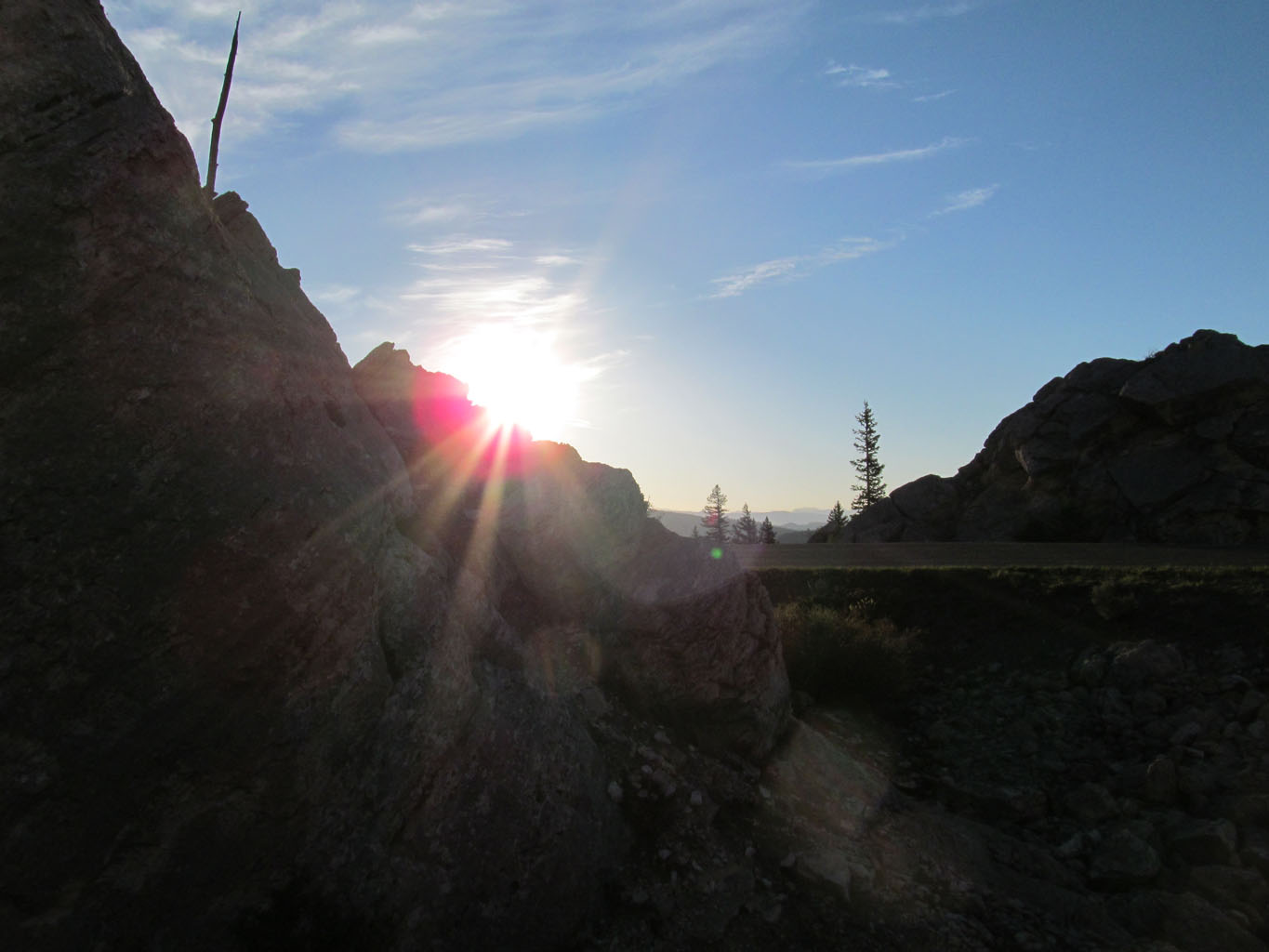
The sunrise in this picture is just looking over the rocky mountain, it shows the amazing landscape of Yellowstone early in the morning.

This picture portrays the fine line between nature and human impact. The elk are free to roam around wherever they please. However, there is a sign on a log stating that no person may go off the path. The fact that the sign is on the log shows how the sign is made to look more natural to blend in with the environment.
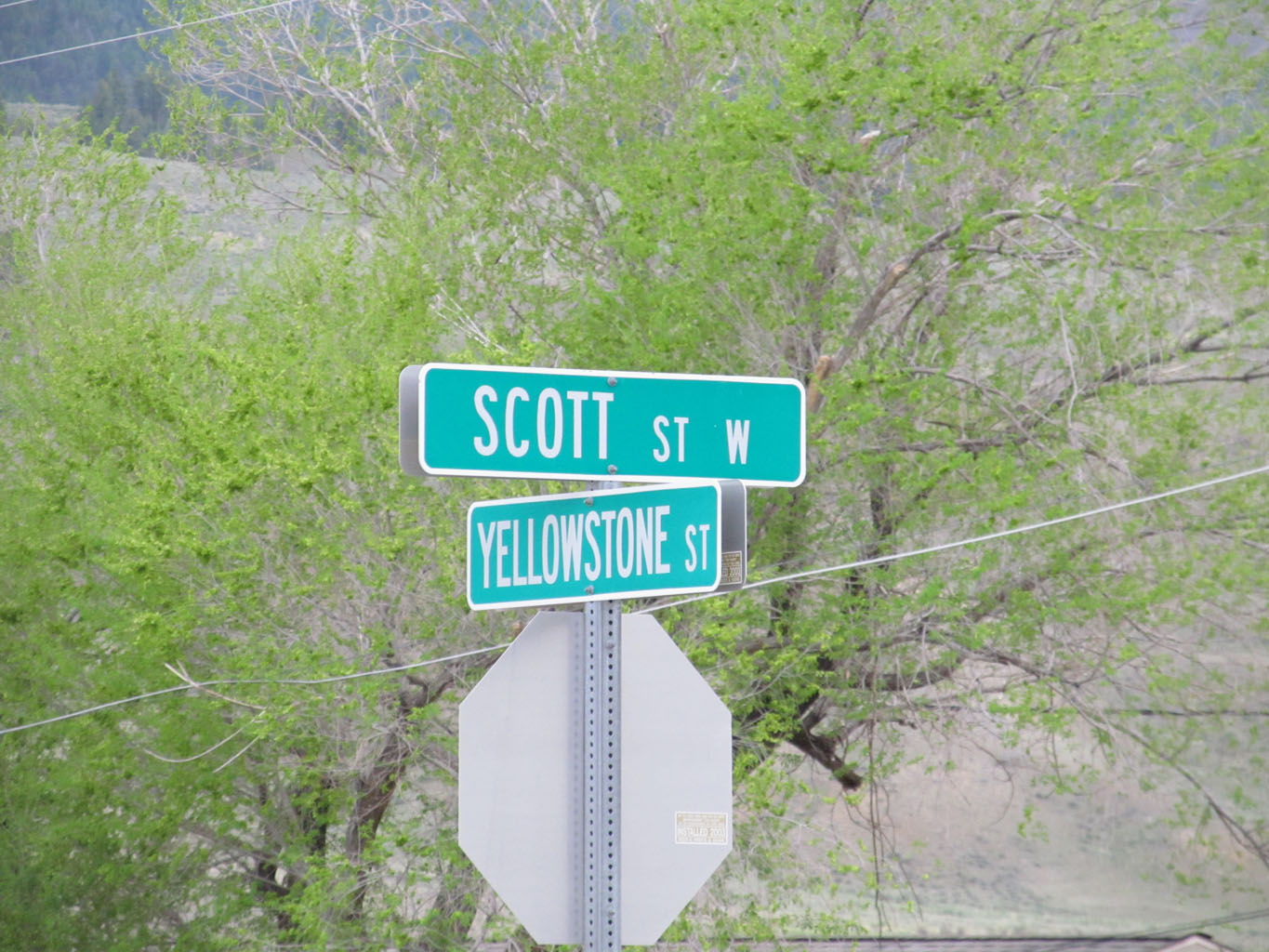

These two pictures are related because one of the main sources of income for people living here is tourism. The street sign has Yellowstone Street on it advertising the proximity of Gardiner, Montana to the Yellowstone National Park. The buildings in the second photo are yellow also advertising the Yellowstone National Park.
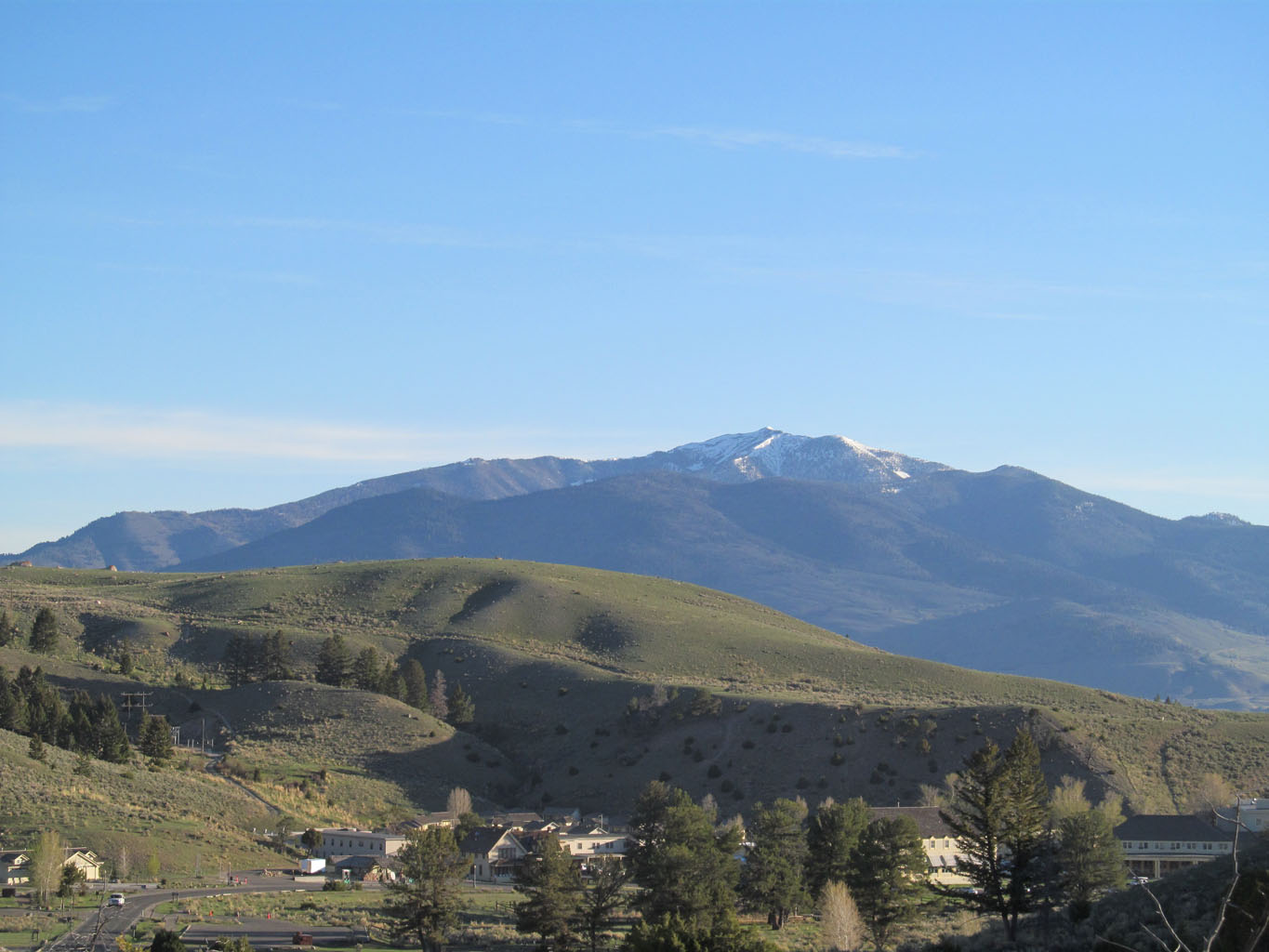
This photograph shows how the land is used locally. The houses are all close together, but there is a large amount of mountainous land around.
Photography Blog- Charles Vancampen
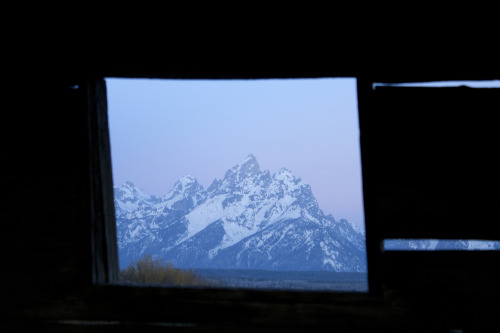
This photo is of the Grand Teton Mountains through the view of a window in the Cunningham Cabin which looks out at the mountain range. I chose to post this photo because it frames the mountains like a picture and provides the viewer with a focused vision of the natural beauty.
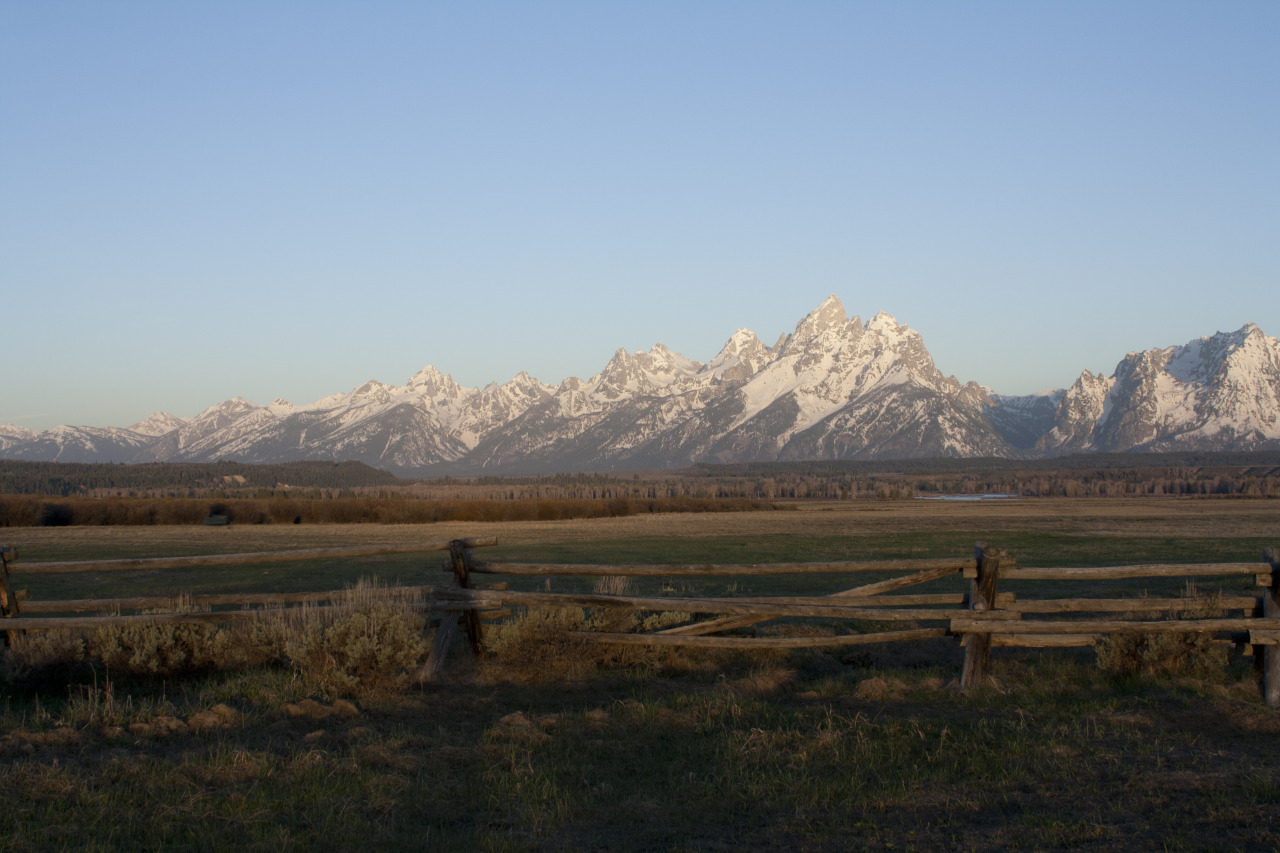
This photo shows the Grand Tetons illuminated by sunlight just after sunrise. I chose to upload this photo because of the fact that it is a very beautiful scene. I truly enjoyed viewing the new sunlight reflecting off of the mountains. The way the mountains were illuminated was one of the most gorgeous things I have seen and it is truly a once in a lifetime view I wished to share.
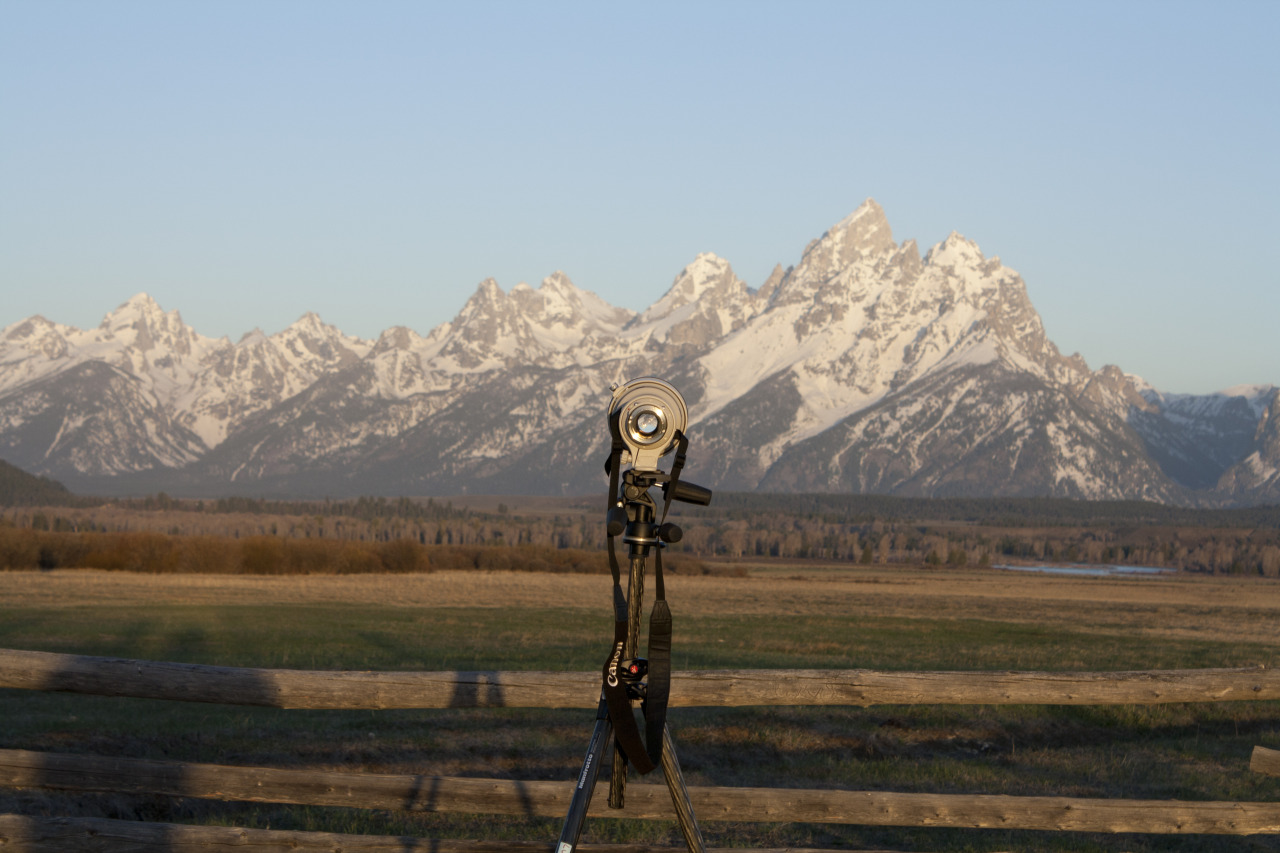
This photo was uploaded because it shows another view of the mountains. Instead of looking solely at the mountains the foreground is of a camera lens which is also looking at the mountains, trying to capture the same thing I am. Instead of snapping picture after picture of the same thing in different lighting I tried to mix it up a bit and ended up really liking this picture.
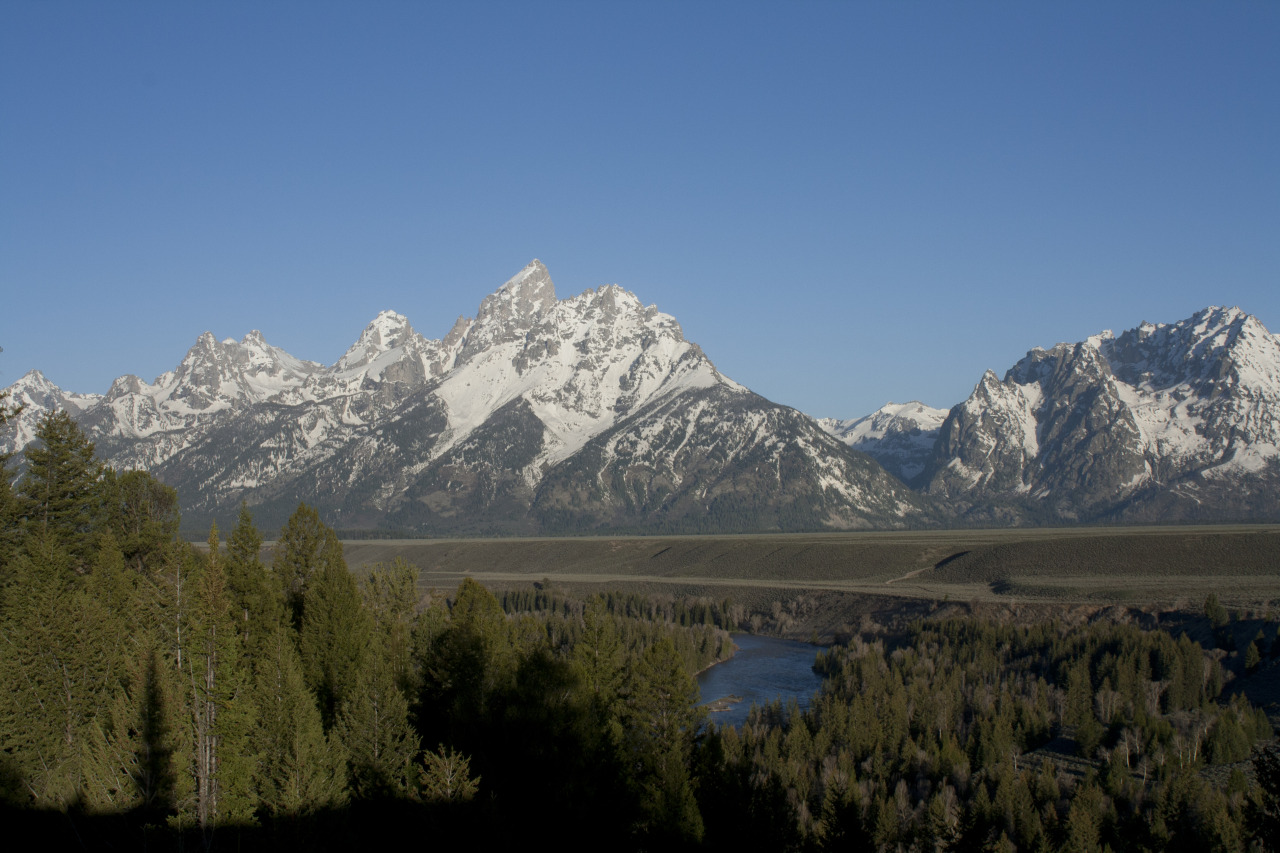
Lastly to show that there were more than just mountains, I photographed the Grand Tetons with the Snake River in the foreground and the flat lands in the middle ground. While the view is still drawn to the mountains, this photo shows that there is more than just beautiful alpine mountains. There is an entirely different landscape beneath the mountains and to leave it out would not do the area justice.
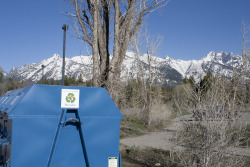
This photo was taken outside of the Moose Junction Visitors Center in Grand Teton National Park. It shows a recycling bin with the mountains in the background. I chose to upload the photo because I thought it was an interesting commentary about how we choose to interact with our surroundings while attempting to minimize impact while driving around in gas-guzzling Suburbans.
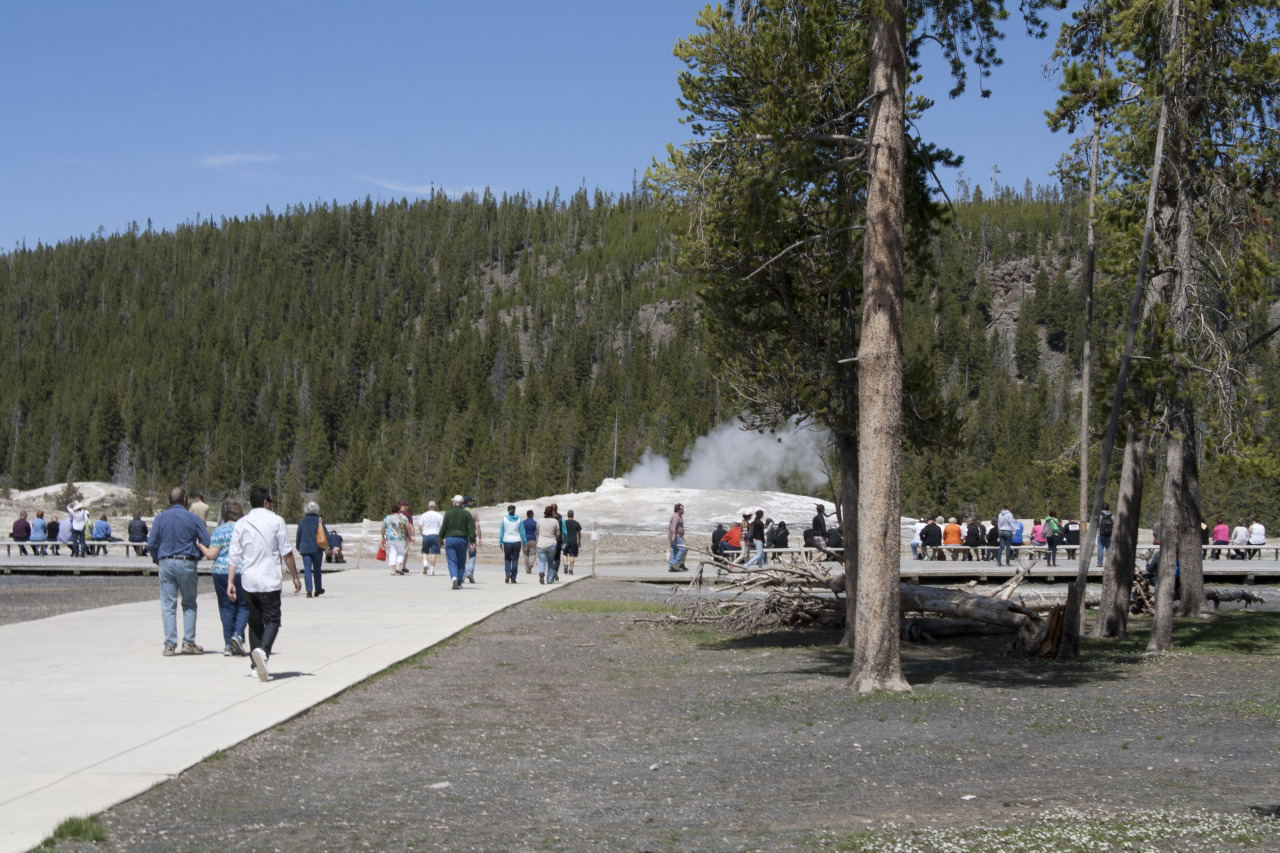
I uploaded this photo because it shows a national landmark surrounded by people who traveled hundreds or thousands of miles to see hot water shoot out of the ground. I though this photo was interesting because of the throngs of people rushing to see this natural wonder go off all the while ignoring the surroundings around them. The people in this photo had their blinders on and were focused on one natural beauty, all the while they were surrounded by other natural beauties. I believe this to be symbolic of the way a majority of us live our lives, going full speed ahead, all the while missing the other beautiful, magnificent, and important things all around us.
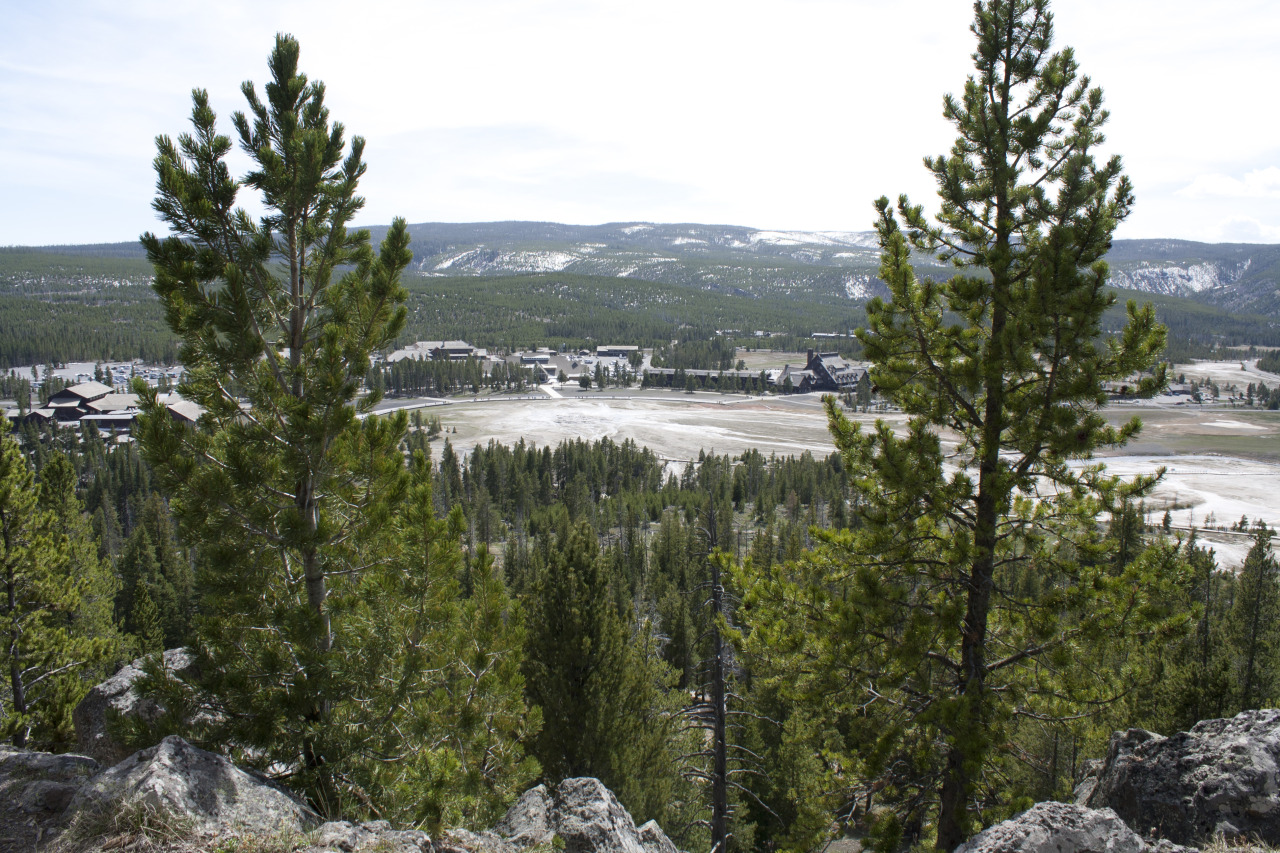
This picture shows the Old Faithful visitors area from Observation Point high above the geyser. I believe this shows the juxtaposition of people who want to enjoy nature. The majority of people want the convenience of a visitor center, ample parking, and viewing area all the while ignoring that they are destroying or negatively affecting the landscape. This picture shows the sandwich of natural beauty, human structures, and natural beauty. While yes, this environmental destruction has adverse affects on the park it is necessary to make sure people are happy. I just though it was interesting that no one in the area seemed to give it a second thought that they were enjoying “nature” while being in a very commercial and touristy built area.
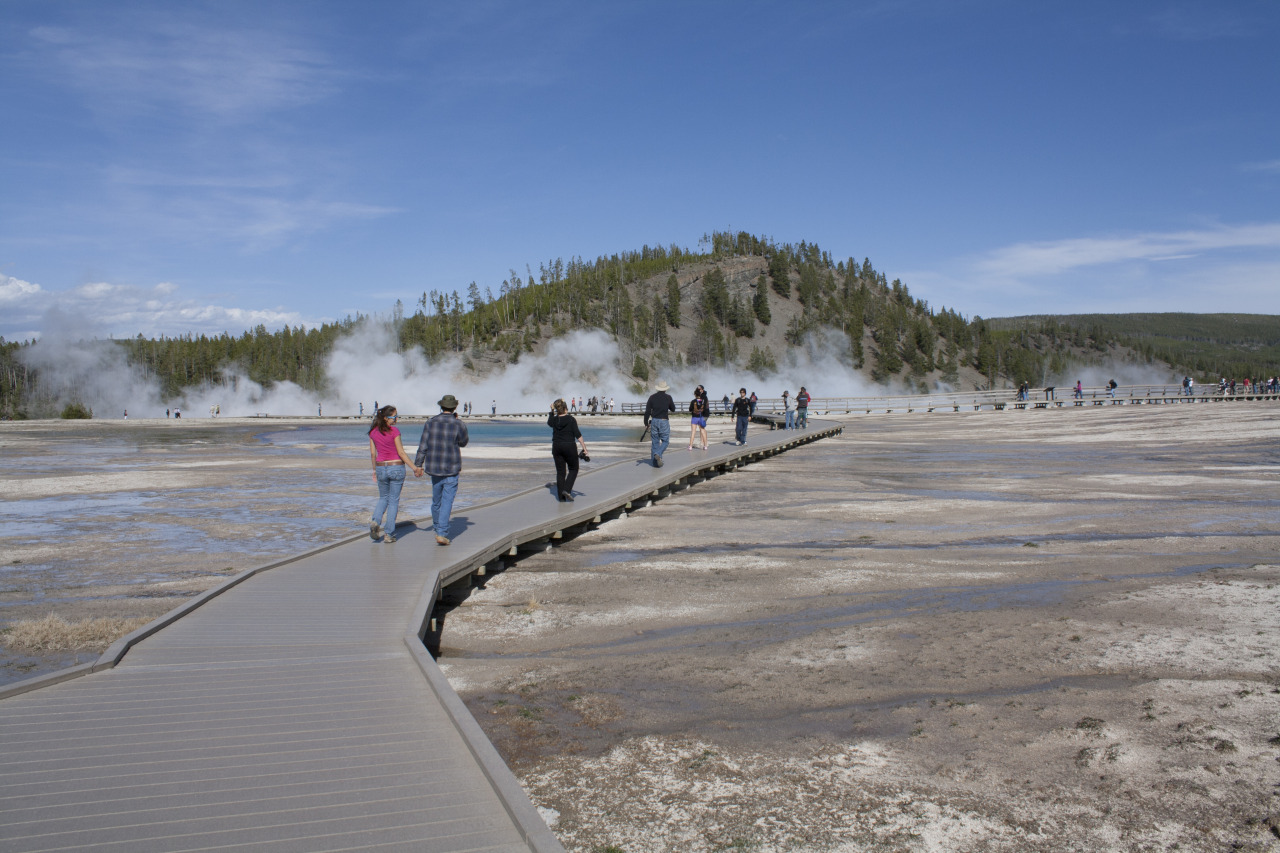
This photo was taken at one of the various hot springs were visited throughout the day. This photo shows the beauty of the area, however, I thought it was entertaining that while visiting something so harsh and extreme, humans have built a walkway for safety and convenience. This photo is a commentary on the fact that we as humans want everything, no matter how dangerous or extreme to be as safe and easy as possible.
Looking at these photos and others by my pack, the common motif seems to that humans are impacting the environment. Every photo sort of references this and shows the sometimes not so symbiotic relationship between people and nature. Warning signs have to be put up, nature redone, and things like walkways built, all in the attempt to make natural parks safe and enjoyable the majority of visitors. This speaks to the dialogue of the course because the photos show that two great forces must co-exist in the park and the right balance must be struck to make sure this is successful, much like the wolves and ranchers.
Jackson Hole Place-as-Text
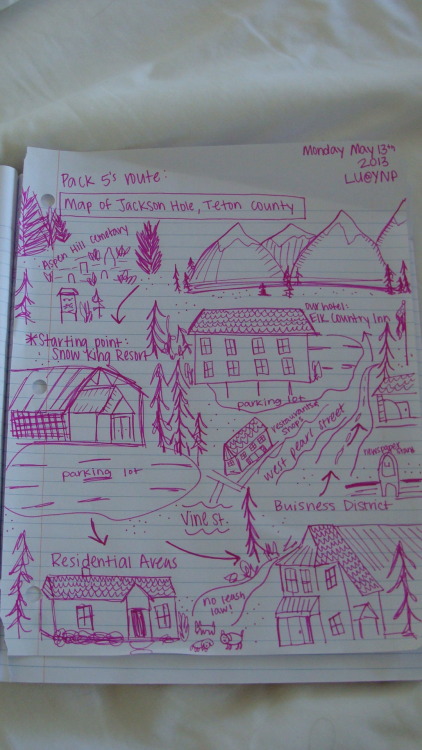
We started our place-as-text exploration near the Ski King Resort in Jackson Hole, Wyoming. This resort is located on the outskirts of town which is business and residential environment. We then walked the rest of our route which consisted of residential and commercial property split about half and half. The built environment was diverse. Towards the beginning of our route the buildings and homes were somewhat dated and appeared to be built in the 1970’s or 1980’s. Then as we moved more towards the center of town where the tourists would be, the built environment started to mimic the old rustic look of frontier Wyoming. The time we conducted this observation was mid-morning on a Monday under partly cloudy skies. The temperature was roughly 60 degrees and humid.
The landscape environment was mostly flat, however, where we started was at the base of the mountain, on which the ski resort was located. The social environment was very relaxed. Even though we were walking around with cameras and observing property and buildings no one gave us a second thought and most were on bikes or walking dogs and just continued on. In addition to this there was no one out. This however, might be able to be attributed to the fact that it was a Monday morning and people were at work.
The town’s environment interacts greatly with the landscape. For instance, in town where it is flat, the land is utilized for commercial and retail businesses as well as restaurants, bars, and hotels. On the outskirts of town is where the ski resort as a whole is located as this is where the mountains are, making this business possible. This is made possible by a cold climate which was evidenced by the fact that snow is still on the ground in mid-May. This means that the area is at least cold and most likely gets a lot of snow. Other times of the year it is warmer and the snow melts off.
This winter weather makes the ski resort possible which is a major industry in the town. This ski motif continues through the town with decorations and buildings that look like they belong in a ski town. In addition to this there were numerous bumper stickers that related to ski and snowboard companies. In addition to this there were numerous real estate and home caretaking companies which suggest a large vacation property or timeshare industry. The people we encountered that were residents were mostly white upper-middle class older people while we ran into younger people that appeared to have been renters.
The community itself is all about marketing tourism and vacationing in the town and surrounding areas. Most of the retail businesses were oriented towards tourists. The businesses that were not the trinket and t-shirt that were marketed towards, what one would presume to be locals were mostly higher end design, construction, and cabinet making stores. The town is packaging itself as the “authentic Wyoming” with rustic buildings, wooden sidewalks, and stone and fake woodwork. This is probably in an attempt to win over tourists by showing them what the west used to be like and what they see in westerns, however, as one our interviewees said, “While I like the town it is a little cheesy and gimmicky, but the town itself is well integrated into its surroundings.”
The people in the town were dressed and acted like one would expect tourists to dress and act. No one was dressed super nice and no one looked like they came out of an old western. The people who were not working in a shop or restaurant had cameras and conducted themselves like tourists. The exception to this was when we were in the residential part of town where people were riding bikes and walking dogs. These people were almost certainly long-term residents. Most of these people were interested in the outdoors, wildlife watching, the environment, and the rodeo. The town also seems to be heavily interested in school sports such as basketball, soccer, and such.
The public documents that were noticed mostly had to do with getting outside and doing things. They were for outdoor sports and businesses, concerts, and other environmental causes. The documents such as newspapers had to do with local environmental and town issues. These documents seemed to focus on sustainability and related topics. In addition to this a shopkeeper suggested that without tourism Jackson Hole would not exist because of the fact that a majority of their businesses were only frequented by tourists. This suggests that without tourism, most businesses would not exist.
About Pack 5
Throughout our Yellowstone trip in the summer of 2013 we will be adding posts about our experiences in the field on completing assignments on this blog. This pack has three members Charles Vancampen, Katie Scott, and Carmen Balogh who will be posting periodically and an introduction to each student is below. Thanks for reading!
Charles Vancampen- Hello, my name is Charlie and I am a criminal justice major. I am a junior here at Longwood University and am also a member of the Cormier Honors College. I am excited for this opportunity because I have always wanted to travel to Yellowstone but have never had the chance and getting to go for a class makes it even better. I look forward to meeting the local stakeholders, learning more about the issues that surround the park, and just experiencing the park and it surrounding areas.
Katie Scott- Currently I’m a junior at Longwood University, and plan on majoring in biology. My hometown is Halifax County, Virginia and this will be my first time out west!
Carmen Balogh- I am a senior and studio art major (drawing/painting). I am very excited to be on the trip to the Grand Teton National Park and Yellowstone National Park. I’ve never had the chance to see these mountains and landscapes and there are no regrets on the journey so far. I look forward to seeing the wildlife (already saw a moose), learning about the issues such as the wolf population vs hunters and ranchers, and getting to know the parks themselves. Being thrown in to the trip on a hike through the Grand Teton was a great start to this class.

